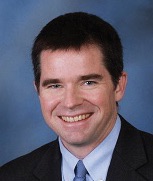Delivering Complex Care for Complex Children: A Multidisciplinary Approach
Matthew T. Brigger, MD, MPH | Kimberly Morris, MS, CCC-SLP, BCS-S, IBCLC

An increasingly visible trend exists regarding efforts to improve the care of children with complex aerodigestive disorders. For many years and a variety of reasons, children with complex disorders have often been cared for in tertiary referral centers. Such centers have provided the availability of a wide range of subspecialty care. Multidisciplinary care centers have existed for many years to treat children with craniofacial anomalies, cystic fibrosis, and cancer. However, recently, pediatric aerodigestive centers have had increasing visibility and marketing presence. As such, it is important to understand who is involved, why such centers exist, and what it means.
Complex Care for Complex Children
Children with upper aerodigestive issues have a wide range of presentations, as well as degrees of severity.
The spectrum of such disorders ranges from simple allergic rhinitis, associated with mild asthma, to tracheostomy-dependent former NICU graduates with a limited pulmonary reserve and a myriad of congenital anomalies. Regardless of the severity of such disorders, these children require care by a variety of both generalists and specialists.
The consensus statement by Boesch et al. (2018) provided an excellent description of the pediatric aerodigestive patient as:
- A child with a combination of multiple and interrelated congenital and/or acquired conditions affecting airway, breathing, feeding, swallowing, or growth that require a coordinated interdisciplinary diagnostic and therapeutic approach to achieve optimal outcomes. This includes (but is not limited to) structural and functional airway and upper gastrointestinal tract disease, lung disease because of congenital or developmental abnormality or injury, swallowing dysfunction, feeding problems, genetic diseases, and neurodevelopmental disability.(Boesch et al., 2018, p. 3).
The driving force behind the development of such centers is the inherent difficulties associated with delivering multidisciplinary care within other settings. A basic premise is that better outcomes will be achieved by avoiding fractionalized care. The trend of increased visibility provides an opportunity for children with a full range of presentations to receive multidisciplinary care. An additional benefit of coordinated care allows a collective experience with developing both basic science and clinical research initiatives to better understand disease processes and further improve care.
Boesch et al. (2018) described the following essential defining functions and features of aerodigestive care coordination:
- Team meeting
- Pre-visit intake
- Prescheduling of appointments and procedures
- Shared clinic
- Combined endoscopy
- Wrap-up visits with family
- Summary document
- Provision of follow-up care (when applicable)
- Operational meetings
Who is Involved?
Central to the care of children with upper aerodigestive problems are a pediatric otolaryngologist, pulmonologist, and gastroenterologist. From a coordination standpoint, the otolaryngologist often serves as a central figure as their anatomical area of expertise represents the junction between the disciplines.
Additionally, the care of such children often requires access to speech-language pathologists with specific interests in swallowing and possibly even voice disorders. Furthermore, an allergist can provide much-needed insight and treatment for children with atypical allergic manifestations. Access to nutritionists and a feeding team provide valuable resources for determining nutritional needs and feeding/swallowing efficiency for intake with this patient population. At times, the team will include pediatric anesthesiologists with experience in spontaneous ventilation anesthesia techniques and access to a pediatric intensive care unit, if a child is to undergo the full range of operative airway care. The involvement of a strong support staff of case management, social work, and nursing ensures that once the children are discharged, they continue to receive the necessary care.
What Are Some Common Conditions That Are Treated?
A wide variety of conditions affecting the aerodigestive tract are within the scope of therapy for coordinated multidisciplinary care. Airway obstruction secondary to congenital or acquired anomalies, atypical reflux disease, chronic cough, aspiration, allergic conditions, as well as feeding and voice disorders, are commonly evaluated and treated (Gergin et al., 2017). Complex presentations, or children with multiple medical problems, are particularly well suited to this care model.
How Do Aerodigestive Centers Facilitate Care for Children Who Have Tracheostomies?
The genesis of medical complexities that ultimately lead a family and medical team to decide on tracheostomy placement is variable. Watters (2017), following a survey of 36 children’s hospitals, indicated that chronic lung disease (56%), neurological impairment (48%), and upper-airway anomaly (47%) are the most common underlying comorbid conditions in children 0-18 years of age, who undergo tracheostomy. However, a common binding factor for these children is needed, specifically, a medical team who identifies the barriers and facilitates interventions that may aid in eventual decannulation. When tracheostomy placement does not have foreseeable options for decannulation, ongoing discussions should still occur regarding medical and therapeutic management for each child.
The aerodigestive team values accountability for assessing and identifying the barriers to decannulation, as it is the unique role of each discipline to facilitate this process. This often includes debunking theories held by individuals on the team, including the extended healthcare community, because these myths limit the optimization of care (e.g., a cuff remaining inflated because of known dysphagia and aspiration risk; poor weaning from the ventilator because of vocal cord paresis; gastroesophageal reflux as a primary factor for poor pulmonary status; inability to trial food by mouth (PO) because of “aspiration on an instrumental assessment,” and more). Although the previously stated scenarios are important discussion points for the aerodigestive team, the relevance of each concern may be highlighted, and the direction of care steered to achieve expedited progression of care. This may include immediate trials of partial cuff deflation during the visit to assess how swallow function changes when gaining access to the upper airway; use of Flexible Endoscopic Evaluation of Swallowing (FEES), to look at vocal cord function and secretion management; obtaining transtracheal pressure measurements, to assess upper airway access and efficiency of respiration; Passy Muir Valve or capping trials; decannulation during the visit; or even admission to facilitate establishment of a more thorough care plan. Throughout each appointment, the team communicates and orders the necessary ancillary testing or interventions deemed necessary to facilitate optimal outcomes for each child.
Optimizing Dysphagia Management for Children with Tracheostomies and Ventilator Dependency
The etiology of pediatric feeding and swallowing difficulties may arise from a variety of airway problems, including laryngomalacia, vocal fold paralysis or paresis, laryngomalacia, laryngeal cleft, choanal atresia or stenosis, facial hypoplasia, subglottic stenosis, as well as CNS and neuromuscular diagnoses. When considering the complexity of having a tracheostomy tube and the known increased risks of adverse events and mortality, a multidisciplinary approach to dysphagia is even more critical (Carron, Derkay, Strope, Nosonchuk, & Darrow, 2000).
The potential effects of a tracheostomy tube on the aerodigestive system are well supported in the literature, including reduced laryngeal movement; aphonia; slower and reduced airway closure during the swallow; reduced cricopharyngeal opening (Deebs, Williams & Campbell, 1999); and tethering of the larynx during the swallow, when cuff pressures are not properly managed (Ding & Logemann, 2005). Additional impacts include reduced airflow to the upper airway, leading to reduced laryngeal sensation and increased pooling of secretions; alteration in subglottic pressure, affecting neuro-regulation and oropharyngeal swallowing physiology (Gross, Mahlmann, & Grayhack, 2003); loss of pressure, impacting breath support; decreased Positive End-Expiratory Pressure, leading to decreased ventilation of the alveoli (contributes to atelectasis) (Sutt, Antsey, Caruana, Cornwell, & Fraser, 2017); and reduced ability to expectorate secretions and to cough effectively (Oconnor, Morris, & Paratz, 2019). With an open system, loss of pressure within the thoracic and abdominal cavities also may impair core strength and stability, causing bowel movements to be more difficult and potentially increasing constipation (Simons, Mehta, & Mandell, 2010).
Having an aerodigestive team can speed the diagnosis and treatment of dysphagia for children with tracheostomy dependence. Focus is placed on helping children regain access to their upper airway to optimize the achievement of their ideal health and aerodigestive potential, which includes establishing the least restrictive diet. Key components of the multidisciplinary visit that uniquely facilitate feeding and swallowing outcomes in children with tracheostomy dependence include:
- Assessment of oropharyngeal swallowing status via clinical examination, including secretion management and response to facilitative swallowing strategies that may reduce suctioning needs.
- Establishment or modification of oral care plans.
- Instrumental assessments (FEES/Modified Barium Swallow Study), when appropriate. The cornerstone of comprehensive care for these children is the active communication that occurs between providers.
- Assessment of cuff status and management with a clear reason and plan, if cuff needs to be inflated.
- Thorough assessment for Passy Muir® Tracheostomy & Ventilator Swallowing and Speaking Valve candidacy and rapid troubleshooting when tolerance of the Valve is not achieved.
- Assessments include the use of clinical airway and dysphagia evaluations by the team; use of transtracheal pressure manometry to determine end-expiratory pressures during Valve or capping use; direct visualization of airway via instrumental examination (at times including FEES), and recommendation of more invasive diagnostic procedures.
- Establishment of a plan to optimize access to swallowing skills and upper airway, if unrestricted cuff deflation or use of Passy Muir® Valve cannot be prescribed by the end of the visit.
Does It Need to Be in a “Center”?
Despite the recent popularity of such aerodigestive centers, the cornerstone of comprehensive care for these children is the active communication that occurs between providers. Furthermore, each provider must understand and have a common perception of the upper aerodigestive tract as a unified system, where there is a complex interaction between the gastrointestinal tract and the upper and lower airways. As such, though a center may allow for easier coordination of higher patient volumes, it is not necessary. Excellent care for these children may certainly be accomplished in a setting where active communication lines exist between subspecialists.
When Do I Refer?
Referral patterns are dependent upon your area of expertise, availability of pediatric subspecialists, and community resources. General guidelines for referrals include children with complex medical backgrounds and with aerodigestive symptoms that fail to subside with routine therapies. Furthermore, it may be useful to refer children who have airway symptoms that are on the mild end of the spectrum but have persistent difficulties. Many children seen in these clinics present with persistent symptoms, such as a chronic cough with no clear etiology, and only a multidisciplinary evaluation results in a unifying diagnosis. In some cases, a comprehensive evaluation may solidify the diagnosis and provide confidence in the devised treatment plan.
Bringing It All Together
The recent attention on such pediatric aerodigestive centers highlights something that has occurred in the care of medically complex children for many years. Multidisciplinary coordination is a vital aspect in the care of children. It is important to realize that the concept is not new. As stated above, such centers have existed for the care of children with craniofacial anomalies, cystic fibrosis, and cancer care for many years. The recent attention serves to highlight the importance of comprehensive, multidisciplinary pediatric care in patients with complex aerodigestive system disorders.
This article is from the Fall 2019 Protocol Issue of Aerodigestive Health. Click here to view Delivering Complex Care for Complex Children: A Multidisciplinary Approach.
References
Boesch, R. P., Balakrishnan, K., Acra, S., Benscoter, C., Cofer, S. A., Collaco, J. M. …Wood, S. E. (2018). Structure and functions of pediatric aerodigestive programs: A consensus statement. Pediatrics, 141(3), e20171701.
Carron, J. D., Derkay, C. S., Strope, G. L., Nosonchuk, J. E., & Darrow, D. H. (2000). Pediatric tracheotomies: Changing indications and outcomes. The Laryngoscope,110(7), 1099-1104. doi:10.1097/00005537-200007000-00006
Collaco, J. M., Aherrera, A. D., Yeung, K. J., Lefton-Greif, M. A., Hoch, J., & Skinner, M.L. (2015). Interdisciplinary pediatric aerodigestive care and reduction in health care costs and burden. JAMA Otolaryngology–Head & Neck Surgery, 141(2), 101. doi:10.1001/jamaoto.2014.3057
Deeb, Z. E., Williams, J. B., & Campbell, T. E. (1999). Early diagnosis and treatment of laryngeal injuries from prolonged intubation in adults. JAMA Otolaryngology, Head & Neck Surgery, 120(1), 25 – 29. doi: 10.1016/ S0194-5998(99)70365-7
Ding, R., & Logemann, J. A. (2005). Swallow physiology in patients with trach cuff inflated or deflated: A retrospective study. Head & Neck, 27(9), 809-813. doi:10.1002/hed.20248
Gergin, O., Adil, E., Kawai, K., Watters, K., Moritz, E., & Rahbar, R. (2017). Routine airway surveillance in pediatric tracheostomy patients. International Journal of Pediatric Otorhinolaryngology, 97, 1-4. doi:10.1016/j.ijporl.2017.03.020
Gross, R. D., Mahlmann, J., & Grayhack, J. P. (2003). Physiologic effects of open and closed tracheostomy tubes on the pharyngeal swallow. Annals of Otology, Rhinology & Laryngology, 112(2),143-152 doi:10.1177/ 000348940311200207
Oconnor, L. R., Morris, N. R., & Paratz, J. (2019). Physiological and clinical outcomes associated with use of one-way speaking valves on tracheostomised patients: A systematic review. Heart & Lung, 48(4), 356-364. doi:10.1016/j.hrtlng.2018.11.006
Simons, J. P., Mehta, D., & Mandell, D.L. (2010). Assessment of constipation in children with tracheostomy. JAMA Otolaryngology, Head & Neck Surgery, 136(1):27-32. doi:10.1001/archoto.2009.207
Sutt, A. L., Antsey, C., Caruana, L. R., Cornwell, P. L., & Fraser, J. (2017).Ventilation distribution and lung recruitment with speaking valve use in tracheostomised patient weaning from mechanical ventilation in intensive care. Journal of Critical Care, 40:164-170. doi:10.1016/j.jcrc.2017.04.001
Watters, K. F. (2017). Tracheostomy in Infants and Children. Respiratory Care, 62(6), 799-825. doi:10.4187/respcare.05366












